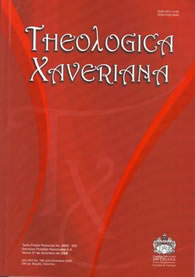Abstract
This paper explores the richness of the theological and eschatological conceptions subtending the language of the Parousia in the texts of the literary and theological tradition of the Fourth Gospel. Its originality and novelty are represented by the way in which the different traditions referring to the second advent of the Lord are articulated, with the intention of expliciting the different eschatological horizons and of grasping the enormous hermeneutical potential of e)/rxomai in its epiphanic dimension, and its extension in implicit language represented mainly by the verbs of vision, knowledge and revelation, and the paradigmatic figure of the Paraclete.
This journal is registered under a Creative Commons Attribution 4.0 International Public License. Thus, this work may be reproduced, distributed, and publicly shared in digital format, as long as the names of the authors and Pontificia Universidad Javeriana are acknowledged. Others are allowed to quote, adapt, transform, auto-archive, republish, and create based on this material, for any purpose (even commercial ones), provided the authorship is duly acknowledged, a link to the original work is provided, and it is specified if changes have been made. Pontificia Universidad Javeriana does not hold the rights of published works and the authors are solely responsible for the contents of their works; they keep the moral, intellectual, privacy, and publicity rights.
Approving the intervention of the work (review, copy-editing, translation, layout) and the following outreach, are granted through an use license and not through an assignment of rights. This means the journal and Pontificia Universidad Javeriana cannot be held responsible for any ethical malpractice by the authors. As a consequence of the protection granted by the use license, the journal is not required to publish recantations or modify information already published, unless the errata stems from the editorial management process. Publishing contents in this journal does not generate royalties for contributors.


